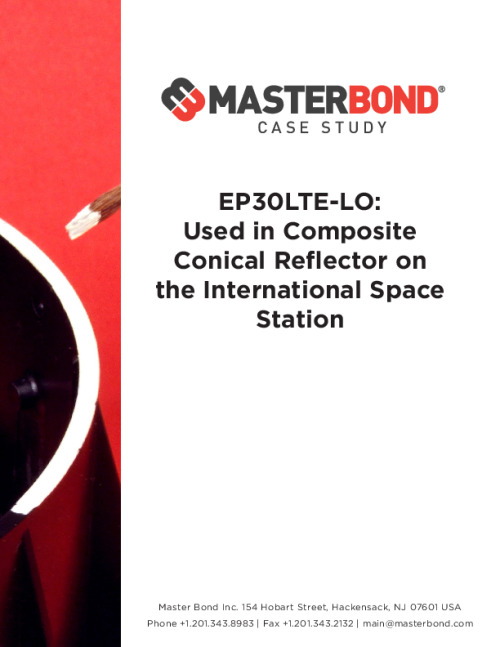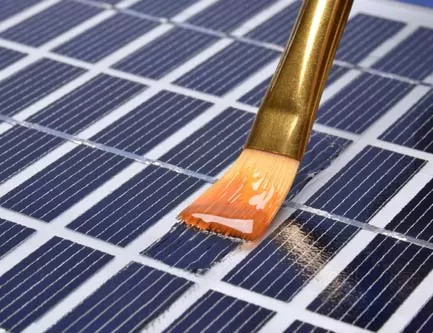Overview of EP30LTE-LO
Master Bond EP30LTE-LO is a specialty epoxy system featuring a low coefficient of thermal expansion (CTE) and is cryogenically serviceable with a temperature range of 4K to +250°F. It passes NASA’s low outgassing test, allowing it to be used in high-vacuum applications such as those in outer space. In fact, EP30LTE-LO has been used to produce a composite conical reflector for use on the International Space Station (ISS) as part of its ongoing efforts to probe fundamental physics in outer space.
Application
The Alpha Magnetic Spectrometer (AMS) is a particle physics experiment module mounted on the ISS and is dedicated to probing fundamental physics in space. To study topics in astroparticle physics such as the existence of antimatter or the relative abundances of light isotopes and charged nuclei, it is necessary to precisely determine the masses of charged particles. To do this, the authors designed a Ring Imaging Cerenkov Detector (RICH) that could measure the velocity of particles in space with sufficient accuracy based on the Cerenkov effect. The top of the RICH was a dielectric material, so when a charged particle crossed the radiator, it created a cone of Cerenkov radiation. However, only about 30% of the Cerenkov photons emerging from the radiator were directed at the Cerenkov photon detector array, so the authors designed a conical reflector to help collect them.
The reflector was produced in 120-degree composite segments that were framed with composite ribs along the entire perimeter of the mirror. They used a BRYTE EX-1515/M55J Laminate with Unidirectional Prepreg composite and adhered it with Master Bond EP30LTE-LO.
To read more about the key parameters and requirements, and to learn the results, please download the full case study now.
Reference
AMS-02 | The Alpha Magnetic Spectrometer Experiment. https://ams02.space/ (accessed 2025-02-11).
Chung, C.H. et al. The AMS Collaboration. AMS on ISS Construction of a particle physics detector on the International Space Station. https://www1b.physik.rwth-aachen.de/~schael/AMS_files/2004_ams_nim_pape…


